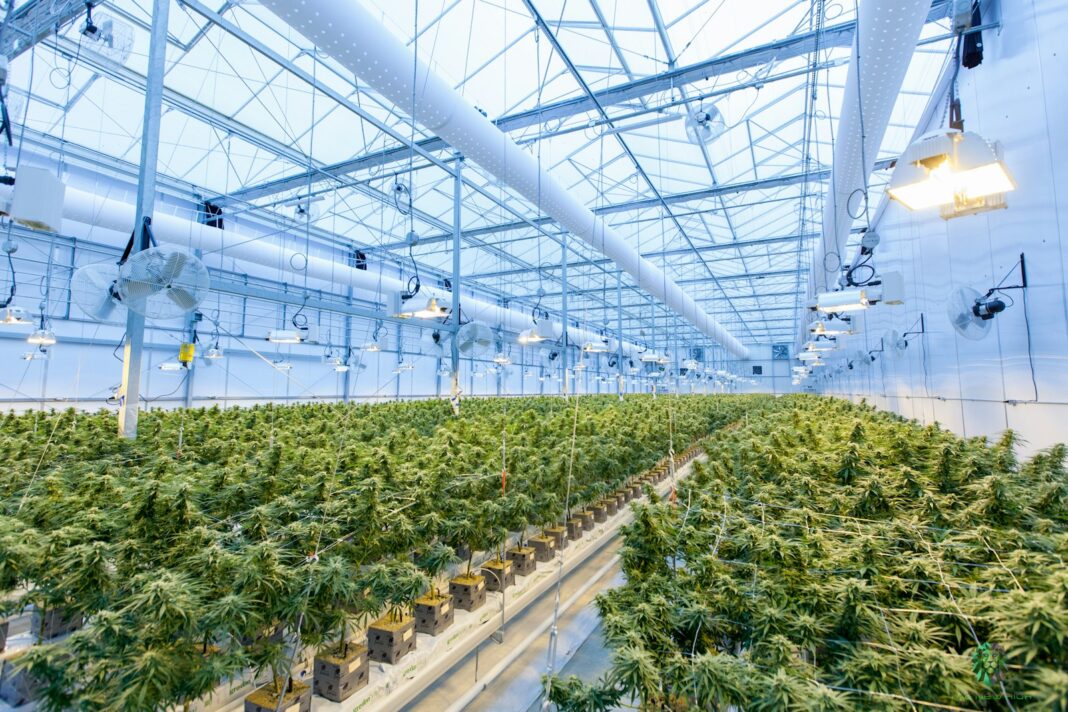Introduction
LED grow lights have revolutionized indoor gardening, providing an energy-efficient, cost-effective, and highly versatile way to grow plants year-round. Whether you’re an indoor gardening enthusiast, a commercial grower, or someone new to plant cultivation, understanding LED grow lights can make a significant difference in the health and productivity of your plants. This guide will explain how LED grow lights work, the different types available, and how to choose the best option for your specific needs.
What Are LED Grow Lights?
LED (Light Emitting Diode) grow lights are artificial light sources designed to stimulate plant growth by emitting light in the photosynthetically active radiation (PAR) range, which mimics the natural sunlight plants need. Unlike traditional grow lights, such as fluorescent or incandescent, LEDs are highly efficient and can target specific light wavelengths that are most beneficial for plant growth.
LED grow lights are popular because of their durability, energy savings, and the ability to customize light spectrums to suit different plant stages.
How Do LED Grow Lights Work?
Light Spectrum and Plant Growth
Plants rely on light for photosynthesis, a process that converts light energy into chemical energy, allowing them to grow. The visible light spectrum ranges from about 400 to 700 nanometers, known as the PAR range. This range includes blue light (400-500 nm), which promotes vegetative growth, and red light (600-700 nm), essential for flowering and fruiting.
LED grow lights are designed to emit the precise wavelengths needed by plants, making them highly effective for promoting healthy growth. Most LED grow lights offer a full-spectrum range, meaning they provide a balance of blue, red, and other light wavelengths to support plants through their entire growth cycle.
Energy Efficiency
One of the key benefits of LED grow lights is their energy efficiency. LEDs consume significantly less power than traditional lighting options like High-Pressure Sodium (HPS) or Metal Halide (MH) lights. They convert a larger portion of electrical energy into light rather than heat, ensuring less wasted energy. This also means lower electricity bills and a reduced environmental footprint.
Lifespan and Durability
LED grow lights have an impressive lifespan, typically lasting 50,000 to 100,000 hours. Unlike other grow lights that need to be replaced every year or two, LED lights can last for several growing seasons without losing efficiency. This longevity makes LEDs a cost-effective solution for long-term indoor gardening.
Benefits of Using LED Grow Lights
Customizable Light Spectrum
Unlike traditional grow lights that offer a fixed light spectrum, LED grow lights can be tailored to emit specific wavelengths of light. This customization allows growers to optimize the light conditions for different plant types and growth stages. For example, blue light encourages leafy growth, while red light promotes flowering and fruit production.
Low Heat Output
LEDs produce far less heat compared to traditional grow lights like HPS or incandescent bulbs. This low heat output reduces the risk of damaging plants through excessive heat exposure and minimizes the need for additional cooling systems. Lower heat also means you can place the lights closer to the plants without worrying about burning them.
Energy Savings
Because LED grow lights use less energy and convert most of it into usable light, they consume up to 60% less electricity than older types of grow lights. For both hobbyist gardeners and commercial growers, this translates to significant cost savings on energy bills.
Environmentally Friendly
LED grow lights are eco-friendly because they consume less energy and have a longer lifespan, reducing waste. Additionally, they do not contain hazardous materials like mercury, which can be found in some traditional light sources.
Types of LED Grow Lights
Full-Spectrum LED Grow Lights
Full-spectrum LED grow lights provide a balanced spectrum of light, closely mimicking natural sunlight. They contain a mix of blue, red, and sometimes infrared (IR) and ultraviolet (UV) light, supporting plants at all stages of their life cycle—from seedling to flowering. These lights are ideal for growers who need a versatile lighting solution that works throughout the plant’s growth stages.
- Best For: Indoor gardeners growing various plants from start to finish.
Targeted-Spectrum LED Grow Lights
Targeted-spectrum LED lights focus on specific wavelengths that benefit certain stages of plant growth. For example, blue-light-focused LEDs are excellent for vegetative growth, while red-light-focused LEDs are better for flowering.
- Best For: Growers looking to enhance a specific stage of plant growth, such as boosting flowering or accelerating vegetative development.
Panel LED Grow Lights
Panel LED grow lights are designed with multiple LED bulbs arranged in a flat panel, offering even light distribution across a larger area. They come in various sizes and can be used for both small and large indoor gardens. Many panel lights are full-spectrum, making them suitable for growing a wide range of plants.
- Best For: Medium to large-scale growers looking for broad, even light coverage.
Bar LED Grow Lights
Bar LED grow lights are long and narrow, making them ideal for placing directly over rows of plants or for vertical farming setups. They are perfect for growers with limited space, and their shape allows for efficient light coverage in tight areas.
- Best For: Vertical gardening, shelving setups, or small grow areas.
COB (Chip on Board) LED Grow Lights
COB LED grow lights use newer technology where multiple LED chips are packed closely together to form a single light source. These lights are incredibly bright, providing intense light coverage that penetrates deeper into the plant canopy. COB LEDs are great for boosting light intensity while maintaining energy efficiency.
- Best For: Large-scale growers needing powerful light penetration for dense plant canopies.
Factors to Consider When Choosing LED Grow Lights
Light Intensity and Coverage
Different plants require varying levels of light intensity. For example, leafy greens like lettuce need less light compared to fruiting plants like tomatoes. When selecting an LED grow light, consider its PPFD (Photosynthetic Photon Flux Density), which measures the amount of light that reaches your plants. Ensure that the light can cover your growing area evenly.
Wattage and Power Consumption
The wattage of an LED grow light indicates its power consumption but does not always correlate with light output. It’s important to look at the PAR output or PPFD to determine how much usable light the plants will receive. Keep in mind that higher wattage LEDs generally cover larger areas, but energy-efficient models can provide similar coverage with lower wattage.
Spectrum Control
Some LED grow lights come with adjustable spectrums, allowing you to switch between vegetative (blue-heavy) and flowering (red-heavy) modes. This feature is useful for growers who want to fine-tune light conditions to suit their plant’s needs at each stage of growth.
Size of the Growing Area
The size of your growing area will influence the type and number of LED grow lights you need. For small, home-based setups, a single panel or bar light may suffice. However, larger commercial operations may require multiple lights or LED panels to cover the entire area adequately.
Durability and Lifespan
LED grow lights are an investment, so choosing a durable model with a long lifespan is essential. Look for lights made from quality materials with solid heat dissipation systems to prevent overheating and ensure longevity.
Best Practices for Using LED Grow Lights
Proper Light Placement
To maximize the effectiveness of your LED grow lights, place them at the appropriate height above your plants. Too close, and the lights may cause leaf burn; too far, and the plants may not receive enough light. Most LED manufacturers provide recommended hanging distances based on the plant’s stage of growth.
- For Seedlings: 24-36 inches from the canopy.
- For Vegetative Growth: 18-24 inches from the canopy.
- For Flowering: 12-18 inches from the canopy.
Lighting Schedule
Plants require different amounts of light at various growth stages. Most plants thrive under 16-18 hours of light during the vegetative stage and 12 hours of light during the flowering stage. Use a timer to automate your light schedule and ensure consistency.
Monitor Heat Levels
Even though LED grow lights produce minimal heat, it’s still important to monitor the temperature around your plants. Ensure your grow space is well-ventilated to prevent heat buildup, especially in smaller areas where airflow may be limited.
Supplement with Other Growth Tools
In addition to LED grow lights, consider using other growth-enhancing tools such as fans for airflow, CO2 enrichment for boosting plant metabolism, and proper humidity control to create the ideal growing environment.
Top Recommended LED Grow Lights
Spider Farmer SF-2000 LED Grow Light
The Spider Farmer SF-2000 is a highly efficient full-spectrum LED grow light, offering excellent light intensity and coverage for both small and medium-sized grow areas. It features a dimmable option, making it easy to adjust the light levels based on your plants’ needs.
- Pros: Energy-efficient, full-spectrum, dimmable.
- Best For: Indoor growers with medium-sized grow spaces.
Mars Hydro TS 1000W LED Grow Light
This compact yet powerful LED grow light is perfect for small-scale growers. It provides a full spectrum of light and excellent energy efficiency. It’s lightweight and easy to install, making it an ideal choice for beginners.
- Pros: Affordable, efficient, full-spectrum.
- Best For: Hobbyists and small grow setups.
VIPARSPECTRA P2000 LED Grow Light
The VIPARSPECTRA P2000 offers excellent light coverage and intensity, making it suitable for larger indoor gardens. It features a dimmer switch to control the light output and uses high-quality LEDs for long-lasting performance.
- Pros: Large coverage, durable, dimmable.
- Best For: Large grow spaces and commercial operations.
Frequently Asked Questions (FAQs)
How many hours a day should LED grow lights be on?
The optimal light schedule depends on the plant’s growth stage. During the vegetative stage, plants usually need 16-18 hours of light, while during the flowering stage, 12 hours of light is typically recommended.
Can LED grow lights burn plants?
While LED lights emit less heat than traditional grow lights, they can still cause leaf burn if placed too close to the plants. Follow the manufacturer’s recommendations for optimal light distance.
Do LED grow lights use less electricity than other types?
Yes, LED grow lights are more energy-efficient than traditional lighting systems like HPS or fluorescent bulbs. They convert more energy into usable light and produce less heat, reducing overall power consumption.
What color light is best for plant growth?
Blue light is essential for vegetative growth, while red light is crucial for flowering and fruiting. Full-spectrum LEDs provide both blue and red light, supporting the entire growth cycle.
Are full-spectrum LEDs necessary for all plants?
Full-spectrum LEDs are beneficial for most plants, as they provide the range of wavelengths needed for healthy growth. However, some plants may thrive with targeted light spectrums based on their specific needs.
How far should LED grow lights be from plants?
The distance varies based on the light’s intensity and the plant’s growth stage. Typically, LED lights should be placed 12-36 inches above the plants, depending on their development stage.















